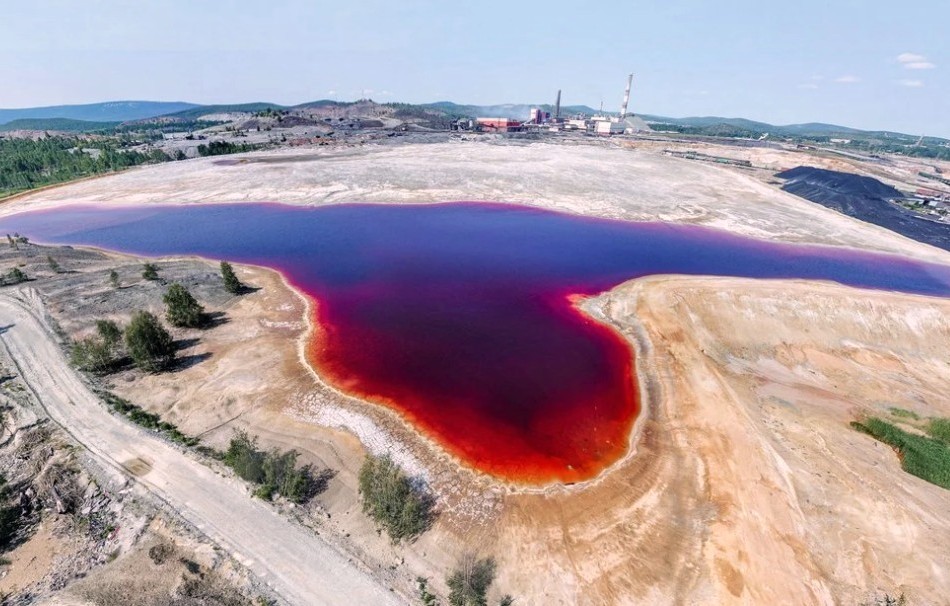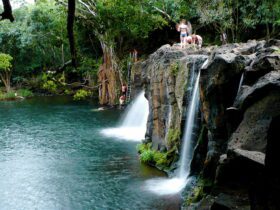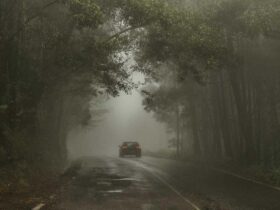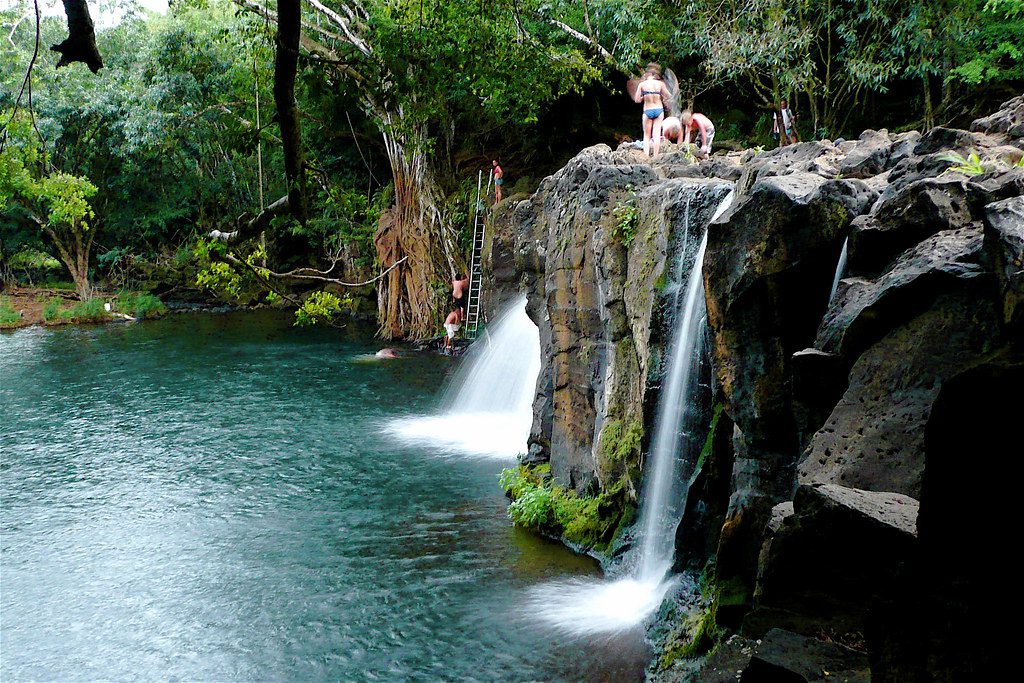When planning a beach vacation, most people picture pristine sands, crystal-clear waters, and endless opportunities for swimming and sunbathing. However, there are some beaches around the world where you should never dip your toes in the water due to hidden dangers. In this article, we will explore seven such perilous beaches, each with its own unique hazards that make swimming impossible or incredibly risky.
#1.Pool Of Death
Located in the Northern Territory of Australia, the ominously named “Pool of Death” lives up to its reputation. This freshwater pool is inhabited by saltwater crocodiles, making it one of the most dangerous swimming spots in the world. These apex predators lurk beneath the surface, and any attempt to swim here would be a deadly mistake.
The Pool of Death, located in Australia’s Northern Territory, is not a place for the faint of heart. As its name suggests, this seemingly serene freshwater pool hides a menacing secret. Saltwater crocodiles, some of the largest and most aggressive reptiles on Earth, call this place home. These apex predators lurk beneath the surface, ready to strike at any moment.
Crocodiles are highly territorial and can become extremely aggressive if they feel threatened or if their territory is invaded. Swimming in the Pool of Death would be a grave mistake, as the chances of encountering a crocodile are alarmingly high. For safety reasons, it’s strictly forbidden to swim in this area, and signs warning of the dangers are posted to deter adventurous swimmers.

#2. New Smyrna Beach
Florida’s New Smyrna Beach is often referred to as the “Shark Attack Capital of the World.” With a high number of shark encounters reported each year, it’s best to avoid swimming here. Although shark attacks are generally rare, the risk is still significant.
New Smyrna Beach in Florida is a popular tourist destination known for its beautiful shoreline and vibrant beach culture. However, it has earned a less flattering reputation as the “Shark Attack Capital of the World.” While shark attacks are relatively rare worldwide, this beach consistently reports a high number of encounters between sharks and swimmers.
The reason for this phenomenon is the presence of a large number of blacktip sharks in the area. These sharks are not typically considered dangerous to humans, but they are known to frequent shallow waters close to the shore. This increases the chances of accidental encounters, often resulting in minor injuries.
Despite the elevated risk, the chances of a fatal shark attack at New Smyrna Beach are extremely low. Most shark encounters here are relatively harmless, resulting in minor injuries such as scrapes and bites. Nevertheless, it’s essential to exercise caution and be aware of the potential presence of sharks when swimming in these waters.
:max_bytes(150000):strip_icc()/GettyImages-999778162-3e83085b6e6a41e7a37e97a51a37024f.jpg)
#3. Galveston County Beaches
Galveston County in Texas is known for its beautiful shoreline, but it’s also notorious for strong currents and rip tides. Swimmers are often caught off guard by the unpredictable water conditions, which have led to numerous drownings over the years. It’s essential to exercise extreme caution or refrain from swimming altogether when visiting these beaches.
Galveston County in Texas boasts beautiful stretches of coastline that attract visitors year-round. However, beneath the picturesque surface lies a hidden danger – strong currents and rip tides that can catch swimmers off guard.
Rip currents are powerful, narrow channels of water that flow away from the shore and into the open sea. They are difficult to spot from the surface and can drag swimmers away from the safety of the beach. Inexperienced swimmers or those unfamiliar with the area’s conditions are particularly vulnerable to these currents.
Tragically, Galveston County has seen numerous drownings over the years due to rip currents. To stay safe, it’s crucial to pay attention to warning signs, adhere to any instructions from lifeguards, and avoid swimming in areas with strong currents.
#4. Lake Karachay Beach
Lake Karachay in Russia may look inviting, but it hides a deadly secret. The lake is highly toxic due to chemical pollutants from nearby factories. A dip in its waters would be a fatal mistake, as the toxic gases that can be released are lethal.
Lake Karachay in Russia may appear serene and inviting, but it conceals a deadly secret. This beautiful lake is highly toxic, and swimming in its waters can be fatal. The toxicity of Lake Karachay is a result of decades of pollution from nearby chemical and industrial facilities.
The lake’s waters contain a lethal cocktail of chemicals, including hydrogen sulfide, which can be released in gas form from the lake’s depths. Inhaling even a small amount of this toxic gas can be deadly. The lake’s surface can also be deceptively calm, luring unsuspecting visitors into a hazardous environment.
Due to the extreme dangers posed by Lake Karachay, access to the lake is heavily restricted, and swimming is strictly prohibited. Signs warning of the dangers are posted in the area to prevent accidents.

You May Also Like These
#5. Bondi Beach
Australia’s Bondi Beach may be famous worldwide, but it has a treacherous side. Powerful rip currents and massive waves make swimming here extremely perilous, even for experienced surfers. Swimmers are advised to stay within designated areas patrolled by lifeguards.
Bondi Beach in Australia is renowned for its beauty and vibrant surf culture. However, beneath the surface of its inviting waves lies a formidable challenge – powerful rip currents that can catch even experienced swimmers off guard.
Rip currents at Bondi Beach are notorious for their strength and unpredictability. These fast-flowing currents can carry swimmers away from the shore and into deeper waters in a matter of seconds. Even strong swimmers can find themselves in distress when caught in the grip of a rip current.
To mitigate the risks, lifeguards are stationed along the beach, and swimmers are strongly advised to swim between the red and yellow flags, which indicate the safest areas for swimming. These areas are carefully monitored, and lifeguards are quick to respond to any emergencies.

#6. Kipu Falls
Located in Hawaii, Kipu Falls is known for its picturesque beauty and seemingly refreshing pools. However, numerous accidents have occurred here due to hidden underwater hazards and strong currents. Tragically, some have lost their lives, which is why swimming here is strongly discouraged.
Kipu Falls, located on the Hawaiian island of Kauai, is often admired for its scenic beauty and serene pools formed by cascading water. However, this seemingly tranquil paradise harbors hidden dangers that have led to numerous accidents and even fatalities.
The pools at Kipu Falls are deceptively inviting, but beneath the surface lie submerged rocks and hidden underwater hazards. Strong currents can also develop suddenly, posing a threat to swimmers. Over the years, there have been reports of visitors being seriously injured or even losing their lives while attempting to swim or jump into the pools.
Due to the risks involved, local authorities strongly discourage swimming at Kipu Falls. Visitors are urged to exercise caution, heed warning signs, and prioritize their safety when enjoying the natural beauty of the area.

#7. The Red Triangle
The Red Triangle, off the coast of Northern California, is notorious for being one of the world’s most shark-infested regions. Great white sharks are known to frequent these waters, making it an extremely dangerous place to swim. It’s best to enjoy the stunning coastal scenery from the safety of the shore.
The Red Triangle, located off the coast of Northern California, is known for being one of the most shark-infested regions in the world. The area earned its ominous name due to the high concentration of great white sharks that patrol these waters. While these magnificent predators play a crucial role in the marine ecosystem, their presence makes swimming in this region extremely hazardous.
Great white sharks are apex predators and have been responsible for fatal attacks on humans in the past. The cold waters and abundant marine life in the Red Triangle attract these magnificent creatures. Despite their awe-inspiring nature, encountering a great white shark while swimming can be a terrifying and potentially deadly experience.
For this reason, it is strongly advised that beachgoers and swimmers in the Red Triangle area exercise extreme caution and remain vigilant. Local authorities often provide information about recent shark sightings and offer guidelines for safe beach activities.

Conclusion
While beaches around the world offer an array of leisure and recreational opportunities, it’s crucial to be aware of potential dangers before taking a dip. These seven dangerous beaches, including the Pool of Death, New Smyrna Beach, Galveston County Beaches, Lake Karachay Beach, Bondi Beach, Kipu Falls, and the Red Triangle, should be approached with caution or avoided altogether. Prioritizing safety and respecting the inherent risks of these locations will ensure a safer and more enjoyable beach experience. Remember that nature’s beauty can be awe-inspiring, but it can also be unforgiving, especially in these hazardous environments.


























Leave a Reply
View Comments